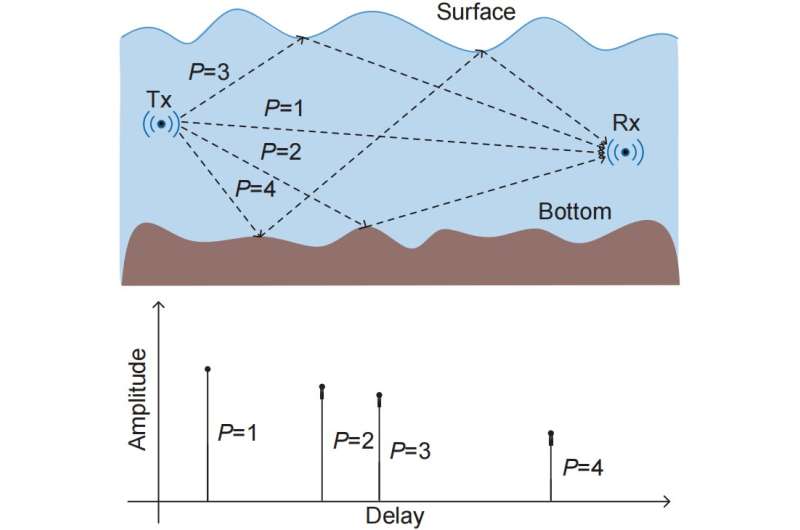This article has been reviewed according to Science X's editorial process and policies. Editors have highlighted the following attributes while ensuring the content's credibility:
fact-checked
trusted source
proofread
Decreasing noise in acoustic underwater transmissions using deep neural networks

The accuracy and reliability of ocean communications and transmissions are affected by many sources of offshore distortion and background noise. Decreasing this interference in ocean transmissions is dependent on the process of channel estimation, or the assessment of background channel characteristics that may distort or interfere with the received signal. Recent modeling has enhanced channel estimation performance using deep neural networks and improved the denoising of ocean transmissions.
Scientists from Xiamen University and the University of Witwatersrand designed a new model using machine learning to better characterize underwater acoustic channel (UAC) interference and improve the accuracy of ocean and offshore transmissions.
Importantly, the deep learning model facilitates the detection of sparse, or rare, interference in channels despite the presence of other, more common interference such as ambient noise, which was not possible with traditional denoising models. In doing so, the researchers more accurately modeled channel interference and improved channel estimation performance, increasing the precision of underwater transmissions in an exceptionally challenging environment.
The team published their findings in Intelligent and Converged Networks.
"Effectively obtaining the sparse features of the underwater acoustic channels is very important for … channel estimation performance and thus the transmission reliability of the system," said Sicong Liu, first author of the research study and associate professor in the School of Informatics at Xiamen University.
"This paper proposed a model-driven sparse learning-based approach with denoising capability, which is a meaningful effort towards reliable underwater transmission in harsh ocean environments," said Liu. Improving underwater transmissions will not only enhance underwater communication, but also the accuracy of oceanic science and monitoring and the efficiency of marine resource acquisition.
The research team's new denoising model does a better job of estimating less common forms of interference that occur in marine environments by leveraging machine learning.
"The proposed method is incorporating a denoiser in … model-driven, sparsity-aware deep neural networks, which makes it possible to learn the sparse features of the underwater acoustic channel in the presence of intensive noise. Compared with traditional non-learning-based, anti-interference or anti-noise methods, the proposed methods have better performance of channel estimation," said Liu.
Importantly, transceiver or receiver movement and mobility and ambient noise are only some of the factors that may contribute to the interference experienced in underwater environments.
Liu and his team are looking for additional ways to decrease channel noise through improved channel estimation. In the shorter term, newer transformer machine learning models could improve channel estimation by programming self-attention functions capable of independently considering the importance of incoming data.
This function may be particularly useful for channels plagued by time variance in transmitted or received signals, which is a common occurrence in underwater environments. Signals transmitted from a single source can take many pathways before reaching a particular receiver, bouncing off of the surface of the water or the bottom of the ocean, changing the path, signal strength and amount of time required to reach a receiver. Additional marine acoustic models could also be considered with additional data and environmental testing.
Ultimately, the study authors envision a system designed to incorporate machine learning on both sides of transmissions to most accurately solve the channel interference problem. "We might want to design an AI-enabled, end-to-end underwater acoustic transmission system, which not only deals with channel estimation using learning approaches like the model outlined … in this paper, but also solves the entire transmission task based on emerging AI techniques," said Liu.
Ideally, machine learning models, if properly designed, will be able to distinguish signal from noise independently and denoise transmissions through autonomous, accurate channel estimation.
More information: Sicong Liu et al, Denoising enabled channel estimation for underwater acoustic communications: A sparsity-aware model-driven learning approach, Intelligent and Converged Networks (2023). DOI: 10.23919/ICN.2023.0001















